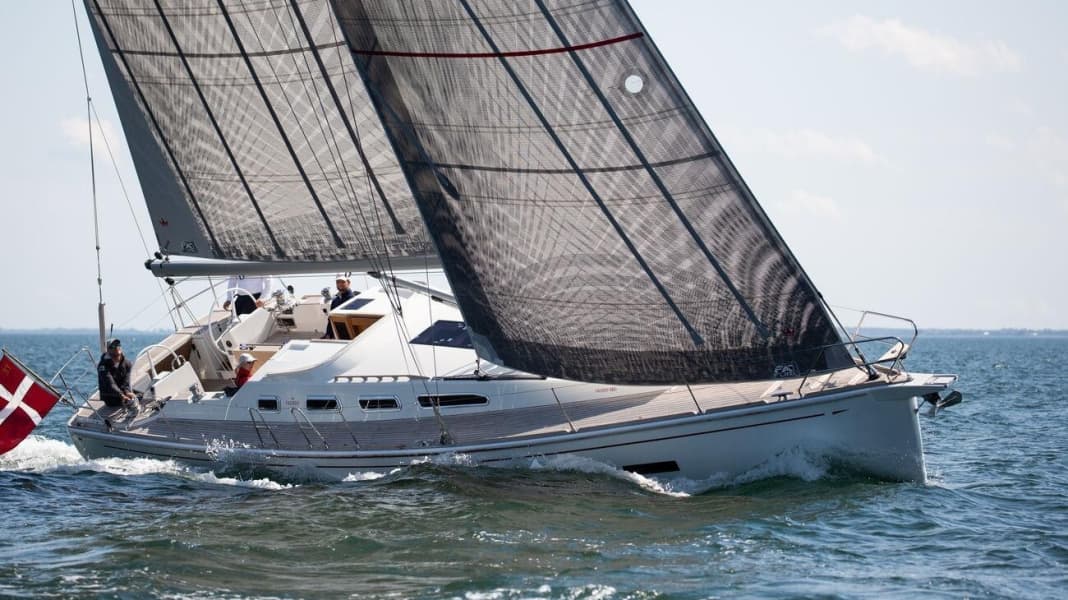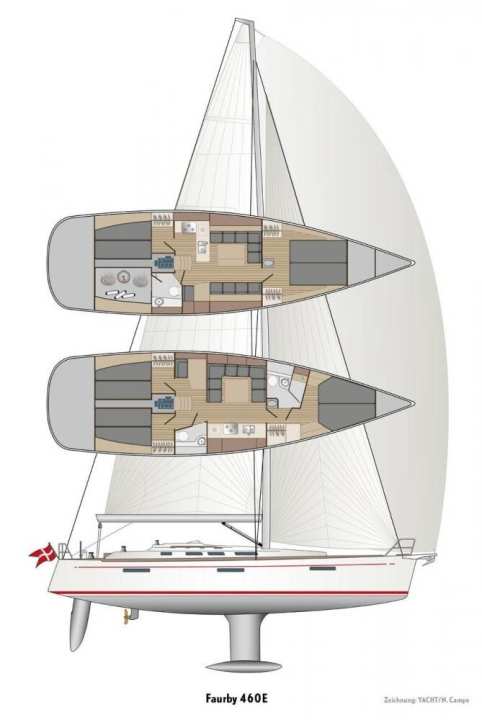

"Basically, we don't build two identical boats," explains shipyard boss Thomas Dan Hougaard. Length, width and hull lines are the only fixed points of the Faurby; they are determined by the negative moulds. The draught, sail area, ballast, layout and design of the interior fittings, on the other hand, are variable. And to a degree that comes very close to a one-off construction - a fact that becomes clear in the first three 46s.
Number 3, which was under construction at the time of testing, is designed as a long-distance vessel for Atlantic passages with a larger crew; it will then function as an owner's vessel on site. Boat number 2 is a luxurious owner's version with an extra-large foredeck set aft, only one washroom and a guest cabin. In contrast, the first construction number is designed as a family boat for six people. The owners wanted a large saloon as the central living space with a longitudinal pantry for cooking and eating together. "The family arrived with a whole set of cooking utensils. We then customised the cupboards so that everything could be stowed away easily," says Hougaard.
The keel and rig can also be varied from sporty to very comfortable. In the test, this meant: aluminium furling mast with deep keel versus carbon rig with carbon furling boom and moderate draught.
You can read how the configurations fare in a direct comparison in YACHT 16/2019. The magazine can be ordered from the DK Shop or you can download the test directly via the link below.






